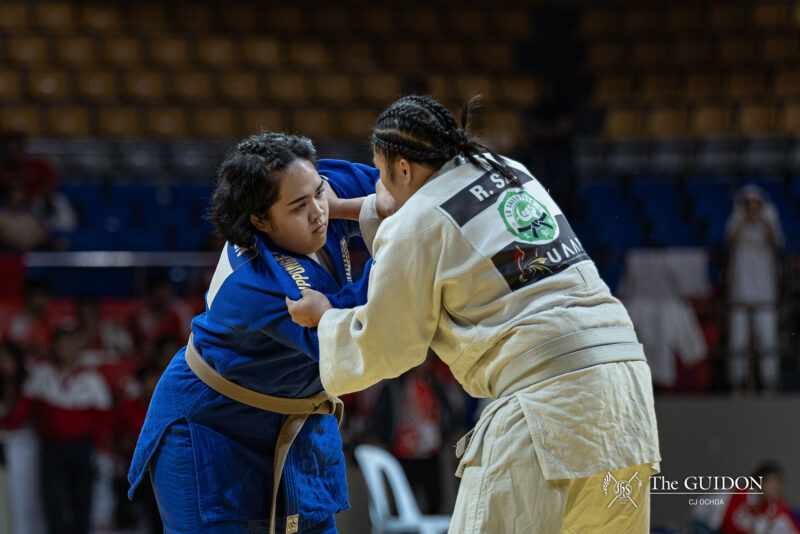“We have to move, we have to move,” I mutter urgently to my teammates. Lances of green light flare from all directions. The weapons in our hands fizzle and die, their own fire inconsistent, petering out. We’re taking hits, and lots of them.
My comrades stay put, heads down, obviously gripped with fear and trepidation. I’m taking more hits—can’t worry about them any longer. I take a deep breath, and plunge forward into the darkness, looking for better cover and concealment.
Thankfully, I’m just playing a game.
The game is laser tag and the venue is LazerXtreme, a multilevel complex in Market! Market! Mall in Taguig. Brought here last year from France, LazerXtreme promises a high-tech combination of tag, hide and seek, and the water pistols shootout game but with advanced infrared technology.
Inside the arena
My sprint has afforded me some time to breathe, and take stock of the area. It is bigger than it first appeared, with many corners and choke points from which to fire from cover. Green beams paint the walls and the ceiling, signs that the battle has been joined. Suddenly, a pulsating beat resonates through the room, and my blood dances to its rhythms.
I find the terrain and atmosphere proper and suited for combat. The room is mostly dark, yet neon lights provide adequate lighting to make it challenging to see, yet bright enough to find and shoot targets.
The darkness makes movement tense, and one can only do calculated and careful steps. The various hide-holes, recesses, and elevations make for interesting tactical possibilities, and the rocking ambient music makes the experience more intense. The result is the perfect venue for a shootout.
The battle is joined
I recall the lessons of the briefing. They’re simple enough: Keep both hands on the guns at all times. Shoot anyone wearing a vest of a different color. If your vest shakes, you’ve been hit, and are out of action for a while. Take cover, aim well, and fire at will. I check my weapon. It hums with power. I’m ready.
The game is played using infrared emitting guns called Phazers. “Whether individual or in teams, the players use their Phazer to tag their opponents’ sensors and score as many points as possible,” explains Ian Navarrete, General Manager of LazerXtreme. When the laser from a Phazer strikes one of the sensors (there are sensors on the chest, shoulders, and back) the vest vibrates and the Phazer is deactivated for a few seconds.
A beam pierces the darkness immediately in front of me, interrupting my reverie. A vibration at my shoulder tells me I’ve been hit. A figure pops out a few meters ahead, his vest shining brilliant blue. It’s my Associate Editor, who joined me in this assignment.
I duck into a corner and fire back once my Phazer reactivates. Hah! His vest flashes bright red, proclaiming to all that I’ve hit him. Edit that, you…
Fire!
The experience of scoring a hit is thrilling. You feel on top of the world, and the satisfaction of seeing your foe’s dejection as his vest blinks out never gets old. A sequence wherein I took out an entire hallway full of opponents without being hit is still fresh in my memory. I feel like I’m Neo, or Max Payne, or my Accounting professor checking my long test—my opponents have no chance.
Frustrating, meanwhile, is the feeling of being tagged. Your own suit and weapon emit pathetic noises of defeat as you scurry away to find cover. And then you curse yourself for your own stupidity.
I remember being tagged thrice in a row by the same person before being able to fire back, not my proudest moment. In times like that, I feel like the first drafts of my article: sad, frustrated, and defeated.
Suddenly, the music reaches a crescendo, and dies. The battle is over. The combatants, tired and weary from the ordeal, shuffle towards the exit to see how they performed. As the data flashes on the computer screen, a smile creeps onto my face. I am ranked second out of 25. A masterful performance, I thought.
Points are measured by your shooting accuracy and how well you evaded being hit yourself. At the end of the game, you get to see exactly how you did. Navarrete says, “Unlike paintball where you identify the losing team by checking how much paint they have on them, the laser tag game gives you detailed statistics right after the game.”
This allows for a new level of appreciation for the game’s technicalities. Knowing exactly how I fared compared to the others made me feel pretty good, yet the accuracy statistics leave me wanting another try.
Aside from the sweat pouring from my body, I’m perfectly fine. Nothing hurts. The entire experience is painless. “That’s what I think is so cool about it,” says Jeri Favis (III BS CTM), who frequents LazerXtreme. “It’s not like those games where you’re afraid to get shot at because it’s going to sting. Here, you get shot, you die, and then 10 seconds later, you’re alive again. You’re a zombie.”
Off the front lines
As I leave the complex, I reflect for a moment about my thoughts during the game. I felt good, no doubt. Undoubtedly, Laser tag is a venue where one can release aggressive tendencies—or combative curiosities—without later landing in court, charged with reckless endangerment.
This might raise some concerns, though. Often frowned upon is handing children guns, even fake ones. Navarette, however, says, “[One thing we don’t do] is connect laser tag to any concepts of war.”
The sci-fi inspired setup may explain for the anti-war virtue. Laser tag is clearly a fictional facsimile of a shootout one might see happening in a movie set in outer space. Even in the briefing, safety is stressed the most. At the end of the day, it’s all good clean fun.
And this leads me to be sure of one thing, that I will be back.
Hasta la vista, baby.






